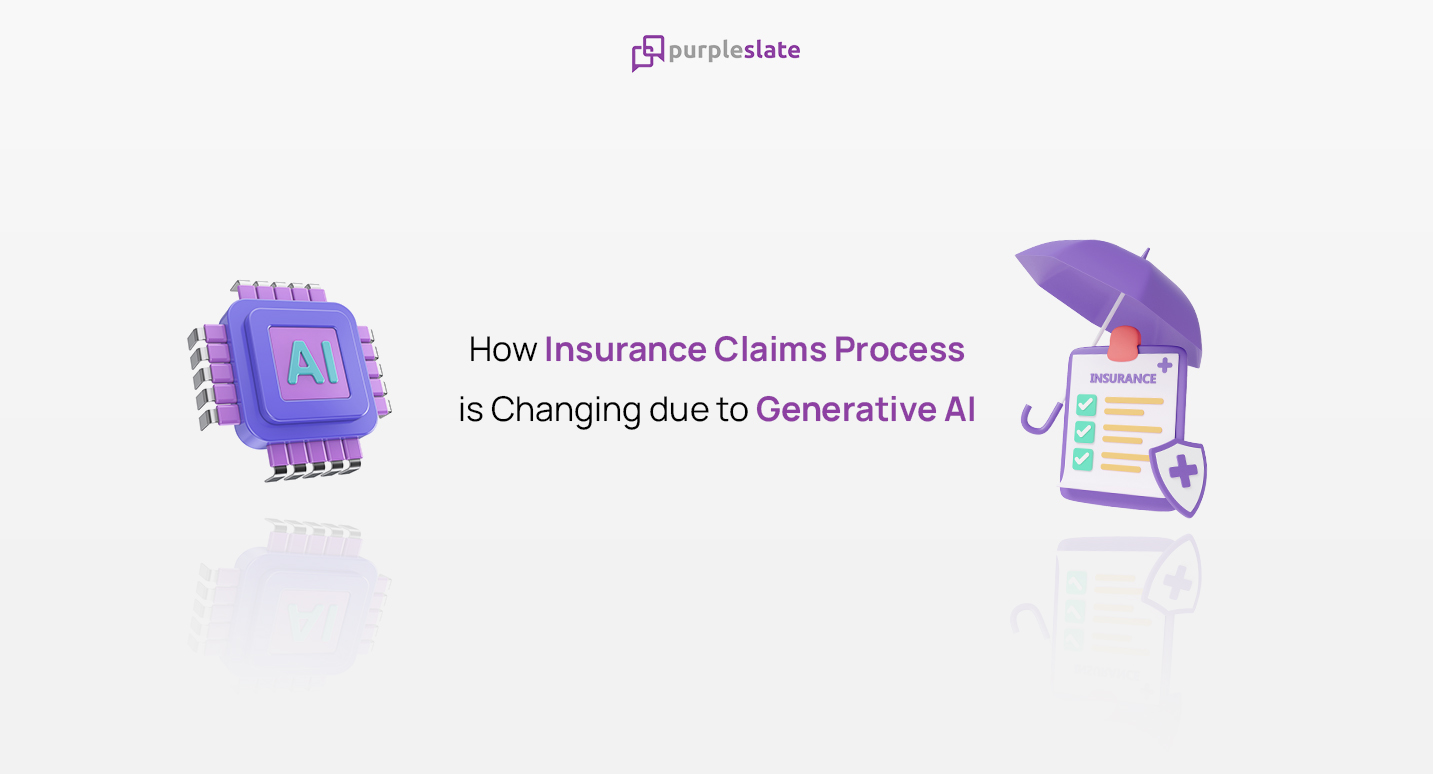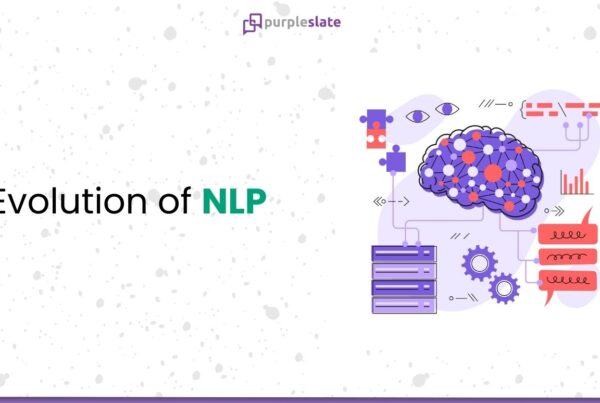
Introduction
The insurance claims process is often seen as a cumbersome and time-consuming task, requiring extensive documentation and communication between policyholders and insurance companies. However, recent advancements in technology, specifically generative artificial intelligence (AI), have revolutionized this process. Generative AI, particularly in the form of chatbots, has the potential to streamline and automate insurance claims, significantly reducing the time and effort required by both policyholders and insurers. In this blog, we will explore the revolutionary impact of generative AI on the insurance claims process and how it is transforming the industry.
The Traditional Insurance Claims Process: Challenges and Limitations
Before delving into the revolutionary impact of generative AI on the insurance claims process, it is essential to understand the challenges and limitations of the traditional approach. The traditional insurance claims process is often characterized by its inherent complexities and inefficiencies.
One of the major challenges is the extensive documentation required from policyholders. This can be a time-consuming and tedious task, often leading to delays in claim processing. Additionally, the back-and-forth communication between policyholders and insurance companies further adds to the complexities and delays in the process.
Moreover, the lack of personalized and real-time assistance can be frustrating for policyholders, who often must navigate through complex insurance jargon without adequate support. This not only results in poor customer experience but also hampers the efficiency of the claims process.
The traditional insurance claims process is also susceptible to human errors, leading to inaccuracies in claim evaluation and settlement. These errors can often result in disputes and dissatisfaction among policyholders.
Introducing Generative AI: A Game Changer in Insurance Claims
Generative AI has emerged as a game-changer in the insurance claims process, revolutionizing the way policyholders and insurance companies interact and operate. By harnessing the power of advanced machine learning algorithms, generative AI has overcome the limitations of the traditional approach, offering numerous benefits.
One of the key advantages of generative AI is its ability to automate the documentation process. With the use of natural language processing and optical character recognition technologies, policyholders can easily upload their documents, reducing the need for manual data entry. This not only speeds up the claim processing time but also minimizes errors caused by human intervention.
Additionally, generative AI enables real-time and personalized assistance to policyholders throughout the claims journey. Intelligent chatbots and smart virtual assistants can provide instant support, answering queries, and explaining complex insurance terms in a clear and concise manner. This seamless communication enhances the overall customer experience and streamlines the claims process.
Moreover, generative AI algorithms are designed to analyze and evaluate claims data with unparalleled accuracy. By leveraging large volumes of historical data, these algorithms can identify patterns, detect fraud, and make precise predictions regarding the legitimacy of claims. This significantly reduces the risk of disputes and ensures fair and efficient claim settlements.
Enhanced Efficiency and Accuracy with Generative AI
Generative AI has revolutionized the insurance claims process by introducing enhanced efficiency and accuracy. With its automation capabilities, generative AI streamlines the entire claims journey, transforming what used to be a time-consuming and manual procedure into a fast and efficient process.
By automating the documentation process, generative AI eliminates the need for policyholders to manually enter data. This not only speeds up the claim processing time but also significantly reduces errors caused by human intervention. With the use of natural language processing and optical character recognition technologies, policyholders can effortlessly upload their documents, allowing for a seamless and hassle-free experience.
Furthermore, generative AI algorithms analyze and evaluate claims data with unparalleled accuracy. Leveraging large volumes of historical data, these algorithms can identify patterns, detect fraud, and make precise predictions regarding the legitimacy of claims. This not only reduces the risk of disputes but also ensures fair and efficient claim settlements, benefiting both policyholders and insurance companies.
Improving Customer Experience through Streamlined Claims Handling
Generative AI goes beyond just improving efficiency and accuracy in the insurance claims process; it also plays a crucial role in enhancing the overall customer experience. By streamlining the claims handling procedures, generative AI ensures a seamless and hassle-free experience for policyholders.
One significant way generative AI achieves this is through its ability to provide real-time updates and communication. Policyholders are no longer left waiting in the dark, wondering about the progress of their claims. With generative AI, they receive timely notifications and updates, keeping them informed at every step of the process. This level of transparency not only improves customer satisfaction but also builds trust in the insurance company.
Additionally, generative AI simplifies the claims filing process. With its automation capabilities, policyholders can easily submit their claims through user-friendly digital platforms. This eliminates the need for complex paperwork or lengthy phone calls and allows customers to file a claim from the comfort of their own homes. By reducing the effort and time required to file a claim, generative AI ensures a more convenient and user-friendly experience for policyholders.
Moreover, generative AI is designed to provide personalized solutions tailored to each policyholder’s needs. With its ability to analyze vast amounts of data, generative AI can identify patterns and trends in a policyholder’s claims history. This enables insurance companies to offer more targeted and relevant solutions to policyholders, making the claims experience more efficient and satisfactory.
Addressing Fraudulent Claims with Generative AI
One of the biggest challenges for insurance companies is dealing with fraudulent claims. Unfortunately, there are individuals who try to take advantage of the system by submitting false or exaggerated claims in order to receive a larger payout. This not only leads to financial losses for insurance companies but also raises premiums for honest policyholders.
This is where generative AI comes into play. With its advanced algorithms and machine learning capabilities, generative AI can detect patterns and anomalies in claims data that may indicate fraudulent activity. By analyzing various factors such as claim history, policyholder information, and previous fraud cases, generative AI can identify potential red flags and alert insurance companies to investigate further.
Generative AI also enables real-time monitoring of claims, allowing insurance companies to spot suspicious activities as they occur. This proactive approach helps prevent fraudulent claims from being processed and ensures that honest policyholders receive the attention and support they deserve.
Furthermore, generative AI can continuously learn and evolve based on new data and emerging fraud patterns. This means that as fraudsters become more sophisticated, generative AI can adapt and stay one step ahead, constantly improving its ability to detect fraudulent claims.
By leveraging the power of generative AI, insurance companies can significantly reduce the number of fraudulent claims, leading to cost savings and increased efficiency in the claims handling process. Not only does this protect the financial health of insurance companies, but it also helps maintain fair premiums for honest policyholders.
Overcoming Implementation Challenges and Ensuring Privacy Protection
While the benefits of generative AI in detecting and combating fraudulent insurance claims are undeniable, there are still some implementation challenges that insurance companies need to address. One of the main challenges is integrating generative AI into existing systems and processes. This requires careful planning and collaboration between IT teams, data scientists, and business stakeholders to ensure a smooth and seamless implementation.
Another challenge is ensuring privacy protection. Generative AI relies on analyzing large amounts of data, including personal information about policyholders. It is crucial for insurance companies to establish robust data protection measures and comply with privacy regulations to safeguard sensitive information.
To overcome these challenges, insurance companies should prioritize data security and privacy by employing encryption techniques, access controls, and regular security audits. Additionally, collaborating with experienced technology partners can provide valuable insights and guidance on implementing generative AI solutions while maintaining strict privacy standards.
Embracing the Revolution: The Future of Insurance Claims Processing
In embracing the revolutionary impact of generative AI on the insurance claims process, insurance companies have the opportunity to transform the way claims are processed, resulting in a more efficient and accurate experience for both insurers and policyholders.
With generative AI, insurers can automate repetitive and time-consuming tasks, such as data entry and document processing. This not only saves valuable time but also reduces the likelihood of human errors, leading to faster claim settlements and improved customer satisfaction.
Furthermore, generative AI enables insurers to identify patterns and anomalies in vast amounts of data, thereby enhancing their ability to detect fraudulent claims. By leveraging machine learning algorithms, insurers can analyze historical data and predict which claims are more likely to be fraudulent, enabling them to take proactive measures to mitigate risk.
Additionally, generative AI can improve the accuracy of claim assessments by analyzing various factors, including policy details, medical reports, and accident descriptions. This leads to fairer outcomes and ensures that policyholders receive the appropriate compensation for their claims.
Looking forward, the future of insurance claims processing lies in the effective integration of generative AI into existing systems. As technology continues to evolve, insurance companies must stay adaptive and invest in training their employees to effectively navigate and capitalize on the benefits of generative AI.
Conclusion: Embrace the Power of Generative AI for a Transformed Claims Process
In conclusion, the immense potential of generative AI to revolutionize the insurance claims process cannot be ignored. By implementing this advanced technology, insurance companies can streamline their workflows, reduce costs, and provide a superior experience for both insurers and policyholders.
Automation of repetitive and time-consuming tasks, such as data entry and document processing, allows insurers to save valuable time and minimize the likelihood of human errors. This not only expedites claim settlements but also enhances customer satisfaction.
Moreover, generative AI empowers insurers to detect fraudulent claims by analyzing patterns and anomalies in vast amounts of data. By leveraging machine learning algorithms, insurers can predict which claims are more likely to be fraudulent and take proactive measures to mitigate risk.
Finally, the accuracy of claim assessments can be significantly improved through generative AI’s analysis of various factors like policy details, medical reports, and accident descriptions. This ensures fairer outcomes and appropriate compensation for policyholders.
As the insurance industry progresses into the digital era, embracing generative AI is key to staying competitive and meeting the evolving needs of customers. By investing in training and system integration, insurance companies can capitalize on the benefits of generative AI to create a transformed claims process that is efficient, accurate, and fraud-resistant.
The future of insurance claims processing is here, and it is time for the industry to wholeheartedly embrace the power of generative AI. By doing so, insurance companies can unlock new levels of productivity, effectiveness, and customer satisfaction, establishing themselves as leaders in the digital revolution of the insurance sector.




